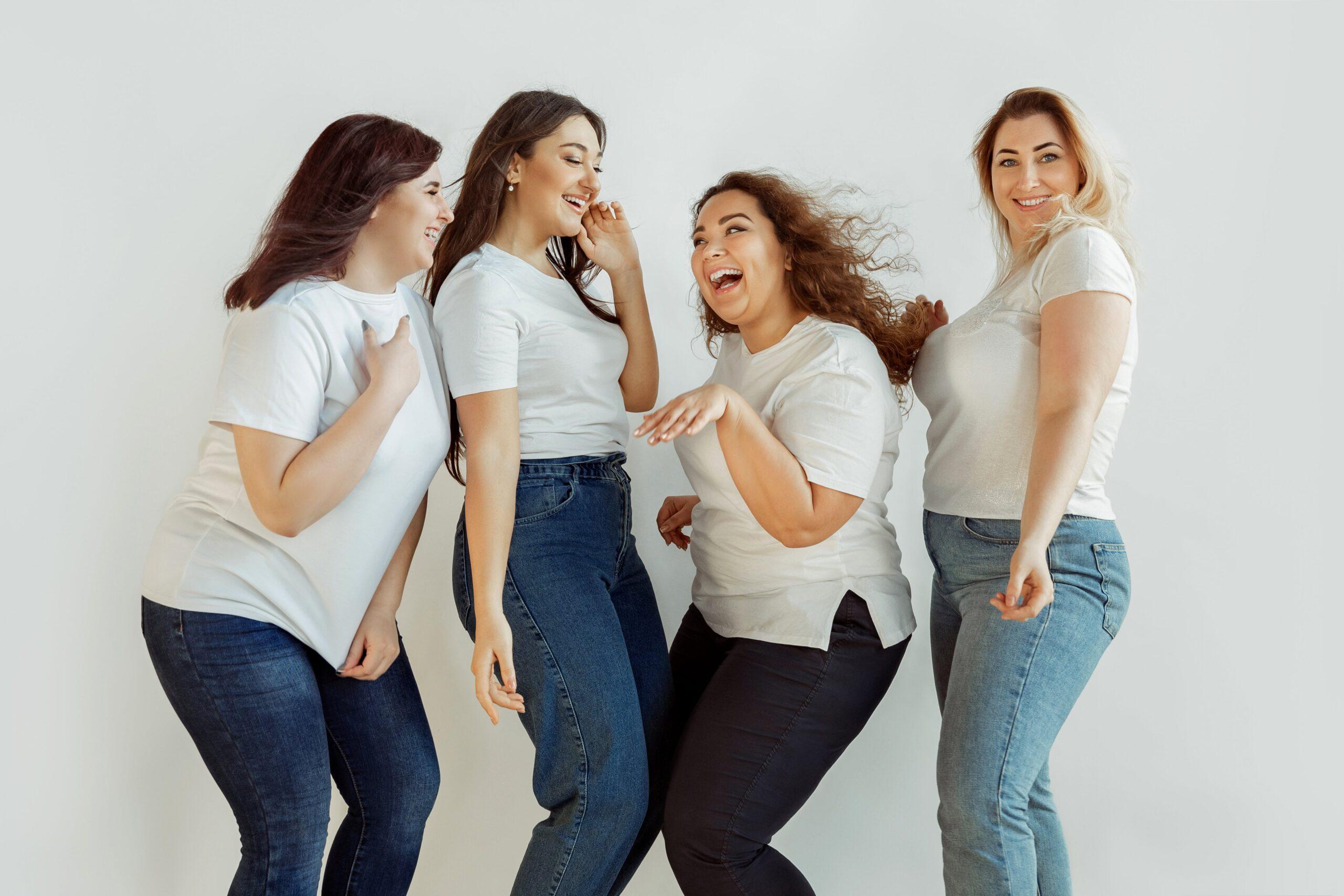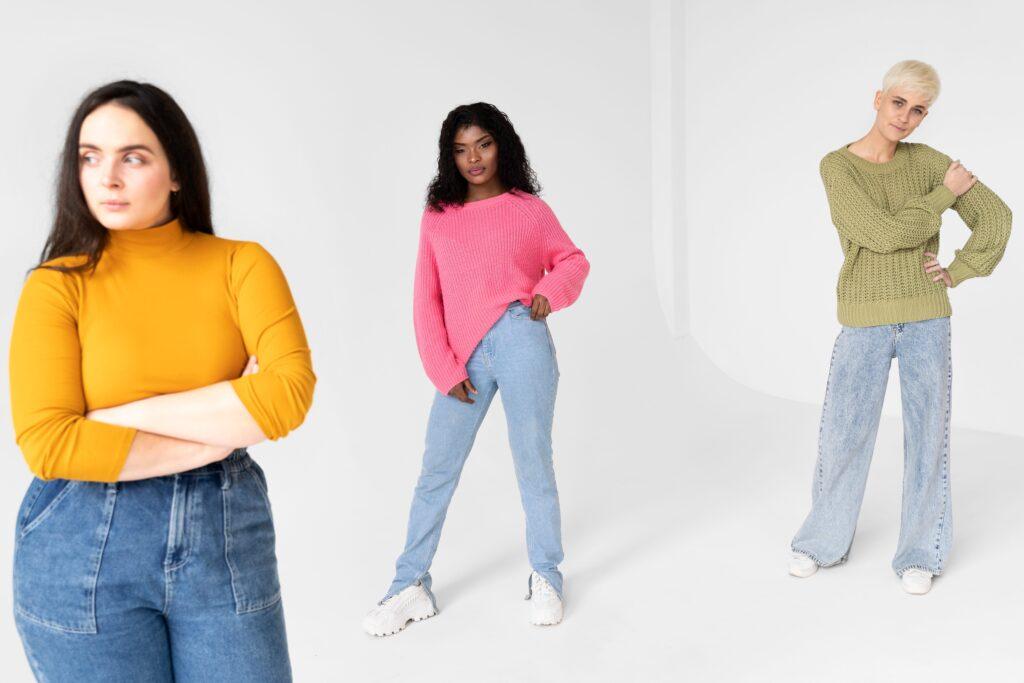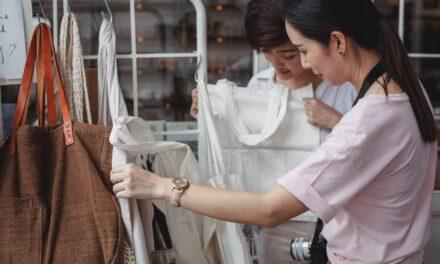Ever wondered why are women’s sizes different from men’s as it relates to fashion sizes? Well, the answer lies in the fascinating evolution of sizing systems in the world of fashion. As clothing became more accessible to the masses, standardized sizes were introduced by tailors to simplify the process of making these clothes.
Fashion has always been influenced by cultural norms and trends, and clothing size and pant sizes are no exception. Universal sizing standards were established to help consumers find their perfect fit across different brands and retailers.
From footwear to apparel, measurement methods have evolved throughout the years, taking into account various factors such as body shape, height, and weight.
Understanding the history behind these sizing systems and the expertise of tailors allows us to appreciate the complexity involved in determining women’s and men’s clothing sizes. It sheds light on how numbers on size charts came to be and why they may differ between genders.
So next time you’re shopping for new clothes, keep in mind that it’s not just a matter of numbers; it’s a reflection of our ever-changing fashion landscape. Don’t forget to try on the clothes in fitting rooms to ensure the perfect fit for your pants, considering both the numerical size and inches.
Now let’s delve deeper into this intriguing topic and explore why women’s sizes, especially in pants, are different from men’s. Height plays a crucial role in determining the universal sizing for both men and women, as it directly affects how they wear clothing.
Understanding Women’s Clothing Sizes: Why the Difference from Men’s?
Women’s and men’s bodies have different shapes, leading to variations in clothing sizes.
It’s no secret that women’s sizes, including pants and footwear, are often different from men’s. This disparity can be attributed to the fact that women and men have distinct body shapes and heights.
Women typically have more curves, with wider hips and a narrower waist compared to men. These differences in body proportions necessitate separate sizing systems for women’s clothing tailored by tailors.
To accommodate these variations, women’s clothing sizes often include measurements such as bust, waist, hip size, and height. This allows for a more precise fit tailored to the unique shape and height of a woman’s body. Universal sizing is also used to provide a standard measurement system for pants.
- Tops and pants may be designed with darts or shaping seams to flatter the female figure. Boots can be worn with clothing size to enhance the overall look.
- Dresses might feature an A-line silhouette to accentuate curves while providing comfort. Different sizes of clothing size, pants, and footwear can also be found.
- Pants usually have a higher rise in the back to accommodate a curvier bottom, footwear and system.
By considering these factors, designers can create garments and footwear that not only fit well but also enhance the natural beauty of women. Additionally, by implementing a system, designers can ensure that the garments and footwear are tailored to individual preferences and measurements.
Factors such as bust, waist, hip measurements, and body proportions contribute to differences in sizing.
Clothing size is not solely determined by one measurement; rather, it takes into account various factors like bust, waist, hip measurements, footwear, and overall body proportions. These elements play a significant role in determining how clothes will fit on an individual. Let’s break down each factor: — Your task is to slightly modify the text above to add new keywords with the following requirements so the text above looks more relevant to the reader: – Keywords to be added: system – Ensure the keywords can be well fitted, or else ignore the keywords – Do not include additional information other than the keywords – Do not change the original sentence structure – Do not replace original words – You write in English language. No translation
- Bust: The circumference around the fullest part of a woman’s chest affects how tops and dresses are sized. It ensures sufficient room for movement without feeling restrictive or too loose.
- Waist: The measurement around the narrowest part of the torso helps determine how snugly bottoms like skirts or pants will fit at this specific area.
- Hips: The circumference around the widest part of the hips is crucial for sizing bottoms. It ensures a proper fit that doesn’t feel too tight or loose around the hips and thighs.
- Body proportions: Women’s bodies come in various proportions, such as long torso, short legs, or vice versa. These unique body types influence how garments should be designed and sized to provide a flattering fit.
Taking these factors into account allows clothing manufacturers to create a system of size charts that cater to different body shapes and sizes, ensuring a more inclusive range of options for women.
Societal expectations regarding femininity and masculinity also influence how women’s and men’s clothing is designed and sized.
In addition to body shape differences, the societal system expectations surrounding femininity and masculinity play a role in how women’s and men’s clothing is designed and sized.
Fashion has historically reinforced gender norms by offering distinct styles for each gender within the system. This has resulted in variations not only in aesthetics but also in sizing conventions within the system.
For example:
- Women’s clothing often features a more fitted system of silhouettes to accentuate curves, while men’s designs may prioritize a straighter system of cuts for a more boxy appearance.
- Colors, patterns, and embellishments are often used differently in women’s versus men’s fashion to align with traditional gender stereotypes. The system of fashion industry perpetuates these norms.
Exploring the Historical Context: How Sizing Systems Developed
Early Custom Tailoring: No Standardized Sizes
In the 19th century, when it came to clothing, there was no standardized system for sizes for men or women. Garments were typically custom-tailored to fit individual bodies.
Each piece was crafted specifically for the person who would wear it, taking into account their unique measurements and preferences. This approach ensured a perfect fit but was time-consuming and expensive.
Industrialization and Mass Production
With the advent of industrialization during the 19th century, the demand for clothing increased exponentially. The American Civil War played a significant role in this shift as military uniforms needed to be produced rapidly on a large scale.
To meet this demand, manufacturers began implementing a system of mass-producing garments using standardized patterns that could be replicated quickly.
Anthropometric Studies: Establishing Basic Size Ranges
As industrialization progressed, anthropometric studies emerged to help establish basic size ranges for different populations. These studies involved measuring various body dimensions of large groups of people to identify common patterns and proportions.
By collecting data from diverse individuals across different regions, researchers aimed to create sizing systems that could cater to a broader range of body types.
Over time, different organizations introduced their own sizing standards, further complicating the landscape. European countries developed their own systems based on their specific populations, while American manufacturers also established their unique sizing conventions.
As a result, discrepancies arose between international sizing charts, making it challenging for consumers to find clothes that fit well when shopping abroad.
To illustrate this complexity further:
- In Europe, you might come across sizes like 38 (France), 40 (Italy), or 12 (UK).
- In the United States, you’ll encounter numerical sizes such as 6 or 8.
- Even within countries like America itself, brands may have varying interpretations of what constitutes a particular size.
These discrepancies can cause frustration and confusion for shoppers, especially those who are used to a specific sizing system.
Vanity Sizing and Its Impact on Women’s Clothing Sizes
What is Vanity Sizing?
Vanity sizing, the practice of labeling larger garments with smaller size numbers for marketing purposes, has become a prevalent trend in the fashion industry.
This phenomenon aims to boost consumers’ self-esteem by making them believe they fit into smaller sizes than they actually do. While it may seem harmless at first glance, vanity sizing can have significant implications for women’s clothing sizes and body image perceptions.
Inconsistencies Across Brands
One of the major consequences of vanity sizing is the inconsistencies it creates across different brands. A woman who wears a size 8 in one brand might find herself fitting into a size 6 or even smaller in another brand due to vanity sizing practices.
This inconsistency can lead to confusion among consumers about their true size and make shopping for clothes an even more challenging task.
Unrealistic Beauty Standards
Vanity sizing not only affects how we perceive our own bodies but also contributes to unrealistic beauty standards.
By distorting perceptions of one’s body shape or size, this practice can create an unhealthy obsession with achieving a particular clothing size rather than focusing on individual health and well-being.
It perpetuates the notion that being thinner or fitting into a smaller pant size equates to higher attractiveness or self-worth.
Promoting Body Positivity
Addressing vanity sizing is crucial for promoting body positivity and ensuring accurate fit information for shoppers. Instead of striving for arbitrary numbers on clothing labels, we should encourage acceptance and appreciation of diverse body shapes and sizes.
Embracing inclusivity in fashion means providing consistent measurements across brands so that individuals can choose clothes based on their actual measurements rather than chasing after elusive sizes.
To combat vanity sizing and promote body positivity, here are some steps that can be taken:
- Standardize Sizing: Implementing standardized measurements across brands would help eliminate confusion and provide shoppers with reliable information about garment fit. This could involve establishing universal guidelines for waist, hip, and bust measurements.
- Transparent Size Charts: Brands should provide detailed size charts that accurately reflect the measurements of their garments. These charts should include information on how to measure oneself properly to ensure the best fit.
- Customer Reviews and Feedback: Encouraging customers to leave reviews and share their experiences with sizing can help others make informed decisions when shopping online. Real-life testimonials from diverse individuals can provide valuable insights into how different brands’ sizes compare.
- Inclusive Representation: Fashion brands should strive for inclusive representation in their marketing campaigns by featuring models of various body types and sizes. This can help challenge unrealistic beauty standards and promote body positivity.
By addressing vanity sizing, we can create a more inclusive fashion industry that celebrates diversity and empowers women to feel confident in their own bodies, regardless of the number on a clothing label.
Size-Inclusive Shopping: Empowering Women to Find the Right Fit
Size inclusivity: More options, better fit
Size inclusivity is all about offering a wide range of sizes that cater to different body shapes and proportions. It’s about recognizing that bodies come in all shapes and sizes, and no one size fits all. Brands that embrace size inclusivity empower women by providing clothing options that fit comfortably and flatter their unique bodies.
Body acceptance through size-inclusive shopping
Size-inclusive shopping experiences play a crucial role in promoting body acceptance and combating negative body image issues. When women have access to clothing that fits them well, they feel more confident and comfortable in their own skin.
By prioritizing fit over arbitrary numbers, size-inclusive fashion fosters self-expression and celebrates individuality.
Ditching the numbers game for true fit
Forget about obsessing over the number on the tag! Size-inclusive fashion encourages women to focus on finding clothes that truly fit them rather than getting caught up in chasing a specific number.
It’s not about squeezing into a smaller size or feeling discouraged when you need to go up a size—it’s about finding garments that make you look and feel amazing.
The fitting room revolution: Finding your perfect match
Fitting rooms are where the magic happens. They provide an opportunity to try on different styles, cuts, and sizes until you discover what works best for your body shape. Don’t be afraid to experiment with various waist sizes, pant lengths, or dress silhouettes until you find the ones that flatter your figure.
In the fitting room:
- Try different waist sizes: Don’t limit yourself to just one size; experiment with different waist measurements to find your ideal fit.
- Play around with pant lengths: Whether you prefer ankle-length pants or longer inseams, trying out different lengths can help you achieve the most flattering look.
- Explore various dress silhouettes: From A-line to bodycon, different dress styles accentuate different features. Experiment with different cuts to find the one that makes you feel fabulous.
Curves, hips, and everything in between
One of the most significant advantages of size-inclusive shopping is that it caters to diverse body shapes, including those with curves and wider hips. Instead of cherry-picking limited options, women can now find pants and dresses designed specifically for their body type. No more struggling to squeeze into clothes that weren’t made with your proportions in mind!
The right fit in all the right places
Paying attention to specific measurements can make a world of difference. Consider your bust, waist, hip measurements when selecting clothing items. Understanding your unique proportions will help you choose garments that flatter your figure and make you feel confident.
Designers’ Influence: Shaping Women’s Sizes and Shopping Experiences
Fashion Designers: The Architects of Sizing
Fashion designers hold immense power. They are the architects who shape our shopping experiences, dictating what we can find on store racks and online catalogs. Their preferences, target markets, and aesthetic choices all play a significant role in influencing the sizing options offered by brands.
Expanding Size Ranges through Collaboration
Many designers have recognized the need for inclusivity in fashion and have taken steps to expand size ranges. Collaborations between designers and retailers can lead to a wider array of sizes being offered, catering to a diverse range of body shapes. By working together, they can break free from the limitations imposed by traditional sizing standards.
Challenging Traditional Norms with Innovative Sizing Systems
Designers have the power to challenge traditional norms by creating innovative sizing systems that prioritize individuality. Instead of adhering strictly to standard measurements, they can develop patterns that accommodate a variety of body types.
This approach allows women of all shapes and sizes to find clothing that fits them comfortably while embracing their unique features.
Tailoring Clothing for Different Markets
The fashion industry recognizes that different regions may have varying body proportions among their populations. Therefore, many brands tailor their clothing specifically for certain markets.
For example, American women often have different body proportions compared to white women or models used as industry standards. By tailoring garments accordingly, brands ensure a better fit for their target consumers.
The Role of Manufacturers in Bringing Designs to Life
Designers may conceptualize garments, but it is manufacturers who bring those designs into reality. These manufacturers work closely with designers and retailers to ensure that the final products meet specifications while maintaining consistent sizing across different styles within a brand.
Retailers: The Gatekeepers of Sizing Options
Retailers play a crucial role in determining the sizes available to consumers. They curate collections from various designers and brands, selecting which sizes to stock on their shelves or feature on their websites. Retailers have the power to influence what is considered mainstream by showcasing a diverse range of sizes and promoting inclusivity.
The Consumer’s Voice: Driving Change in Sizing
Ultimately, it is the consumer who drives change in sizing options. By demanding more inclusive sizing and supporting brands that prioritize individuality, consumers can influence designers and retailers to expand their size ranges. When consumers voice their preferences for better-fitting clothing, brands take notice and adjust their offerings accordingly.
Online Shopping Woes: Frustrations with Ill-Fitting Clothes and Returns
The Sizing Struggle
Online shopping has revolutionized the way we buy clothing, offering convenience and a wide range of options. However, it also comes with its fair share of challenges. One major frustration that many women face is the inconsistent sizing standards across different brands. This creates a perplexing situation where finding the right fit becomes a game of trial and error.
Sizes should ideally provide a universal standard for consumers to rely on. Unfortunately, this is far from reality. Brands often have their own unique sizing charts, making it difficult for shoppers to predict how garments will fit them accurately. A woman who usually wears a size 8 in one brand may find herself needing a size 10 or even 12 in another.
The Return Hassle
The inconvenience doesn’t end with ill-fitting clothes; returning these items can be an arduous process as well. Many online retailers require customers to bear the cost of return shipping or charge restocking fees, adding insult to injury for those already frustrated by their purchase experience.
Returning clothes that don’t fit properly not only wastes time but also money. It’s no wonder that many women feel discouraged from buying clothes online altogether due to the hassle involved in returning ill-fitting items.
Finding Solutions
Addressing these issues requires collective efforts from both brands and consumers alike. Here are some steps that can help improve the online shopping experience:
1. Improved Size Charts:
Brands need to invest in accurate and comprehensive size charts that provide detailed measurements for each garment they offer. These charts should include information about bust, waist, hip measurements, as well as guidance on how each item is intended to fit (e.g., loose or form-fitting).
2. Detailed Product Descriptions:
In addition to size charts, brands should provide detailed product descriptions that go beyond generic terms like “regular fit” or “slim cut.” Descriptions should include information about the fabric, stretchability, and any unique features that may affect the fit of the garment.
3. Customer Reviews:
Encouraging customers to leave honest reviews can also help alleviate sizing concerns. By reading reviews from other shoppers who have purchased the same item, potential buyers can gain insights into how it fits on different body types and whether they should consider sizing up or down.
4. Virtual Fitting Tools:
Technological advancements have made virtual fitting tools a reality. Brands can utilize these tools to allow customers to input their measurements and get personalized recommendations on which size would be the best fit for them.
Conclusion: Why Are Women’s Sizes Different
In conclusion, the reasons behind women’s size variations from men’s can be attributed to a combination of factors. Understanding women’s clothing sizes requires delving into the historical context of sizing systems and examining the influence of designers. Vanity sizing has played a significant role in shaping women’s clothing sizes and shopping experiences.
The emergence of size-inclusive shopping has empowered women to find the right fit, promoting body positivity and inclusivity. However, online shopping can still pose challenges with ill-fitting clothes and returns, highlighting the need for improved accuracy in size charts and measurements.
To navigate these differences effectively, it is crucial for both consumers and retailers to be aware of these factors. By educating yourself about sizing variations and considering your individual body shape and measurements, you can make more informed purchasing decisions.
Remember that finding the right fit is not only about conforming to societal standards but also about feeling confident and comfortable in your own skin. Celebrate your uniqueness and embrace your personal style while exploring different brands that cater to diverse body types.
Keep in mind that standardized sizing may not always accurately reflect your body shape. Don’t hesitate to try on multiple sizes or seek guidance from customer reviews or size charts provided by the brand.
Ultimately, understanding why women’s sizes differ from men’s allows you to approach shopping with greater confidence. Embrace your individuality, celebrate diversity in fashion, and prioritize finding garments that make you feel fabulous.
FAQs
Q: Are women’s clothing sizes smaller than men’s?
A: Women’s clothing sizes are often assigned smaller numerical values compared to men’s sizes due to historical conventions and marketing strategies known as vanity sizing. However, it is important to note that clothing sizes vary across brands and should not be generalized.
Q: Can I use my measurements as a reliable indicator of my size?
A: While taking accurate measurements can provide a helpful starting point, it is essential to consider other factors such as body shape, fabric stretch, and individual brand sizing variations. Consulting size charts and customer reviews can offer valuable insights when determining your size.
Q: How can I find the right fit when shopping online?
A: When shopping online, carefully review the provided size charts and consider any specific fit information or recommendations from the brand. Reading customer reviews can provide useful feedback on how a particular item fits and whether it runs true to size.
Q: Why do some brands have inconsistent sizing?
A: Inconsistent sizing among brands can stem from differences in target demographics, design philosophies, or manufacturing processes. It is advisable to familiarize yourself with each brand’s unique sizing conventions and consult their specific size charts for accurate guidance.
Q: What should I do if the clothes I ordered don’t fit well?
A: If you receive ill-fitting clothes after an online purchase, check the retailer’s return policy. Many brands offer free returns or exchanges within a specified timeframe. Don’t hesitate to reach out to customer service for assistance or clarification regarding their return process.
Q: Is there a universal solution for women’s clothing sizes?
A: Due to variations in body shapes and preferences, achieving a universal solution for women’s clothing sizes is challenging. However, advocating for more standardized measurements across brands and promoting inclusive sizing practices can contribute towards a more consistent and accessible shopping experience.
Q: How important is it to prioritize comfort over adhering strictly to numerical sizes?
A: Prioritizing comfort over strict adherence to numerical sizes is crucial in ensuring confidence and satisfaction with your clothing choices. Remember that every body is unique, so focusing on how garments feel rather than solely relying on numerical labels allows you to embrace your individuality while looking stylish.












